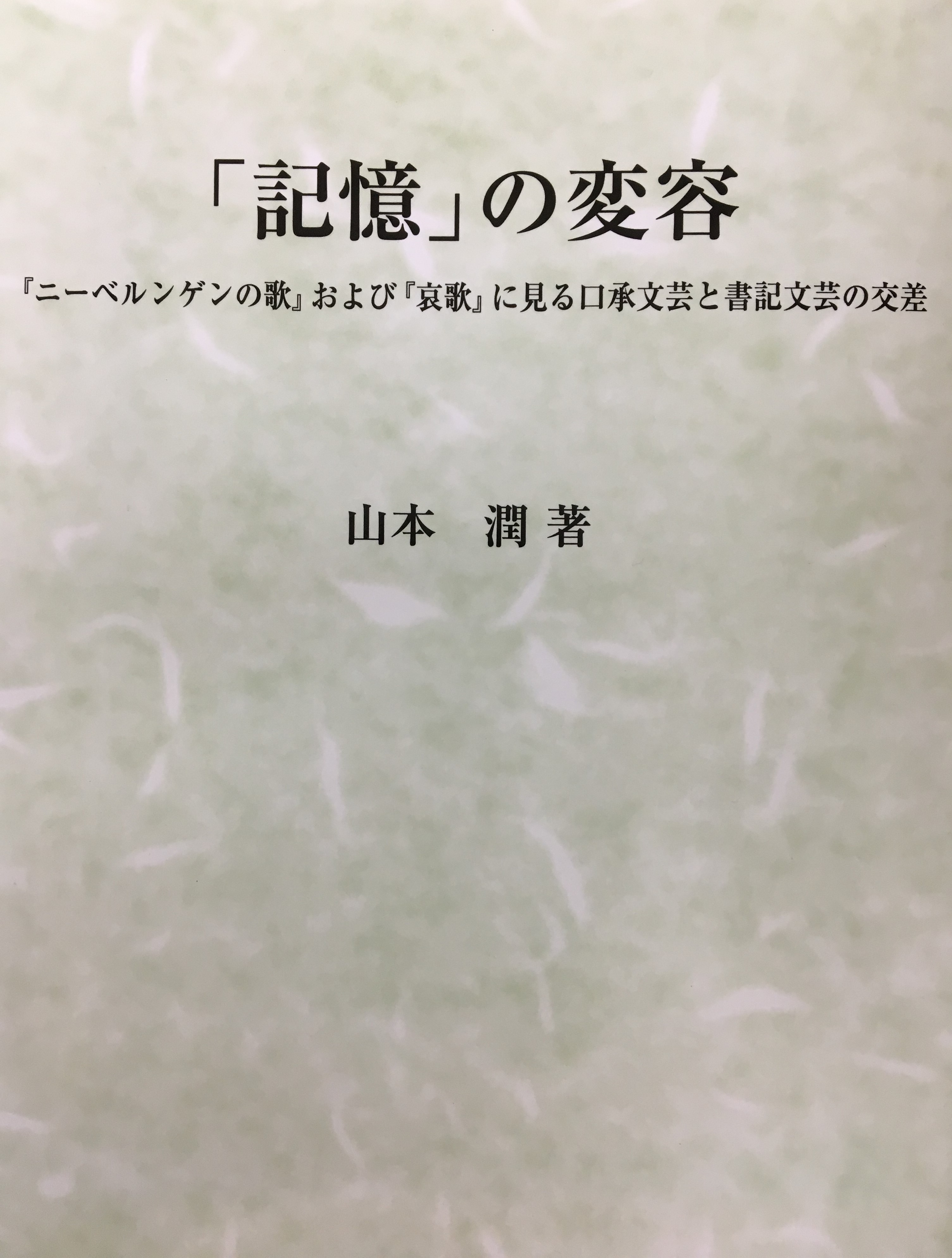
Title
Kioku no henyo (An Intersection of Memories: Nibelungenlied and Nibelungenklage: An intersection of oral and written literary traditions)
Size
308 pages, A5 format, Hardcover, Horizontal composition
Language
Japanese
Released
February, 2015
ISBN
978-4-8115-7811-8
Published by
Taga Shuppan
Book Info
See Book Availability at Library
Japanese Page
Heroic ballads and poetry emerging out of historical events were, up through the Middle Ages, the main medium for transmitting memories within the realm of oral culture. Two works that marked the transition of oral to written literature in German-speaking regions were the heroic epic Nibelungenlied (The Song of the Nibelungs), which tells the story of the assassination of the dragon-slaying hero Siegfried and the revenge taken by his wife Kriemhild, and its sequel Nibelungenklage (The Elegies of the Nibelungs). These two literary works of the early thirteenth century were based on Germanic oral traditions recounting historic events. Though they were for a long time passed on as closely linked manuscripts, in many ways the two works are exact opposites. First, the former Nibelungenlied is rendered in the chanted rhythm of verse and syntax typical of the oral poetry that characterizes oral literary traditions. The sequel, on the other hand, consists of rhyming couplets that were a common literary motif of the written court poetry and chronicles of the day. This apparent dichotomy between the two works is also evident elsewhere. The first work is constructed in a written style that retains the structural legacy of its origins as an oral transmission of stories heard, and actively incorporates the homogeneity and continuity of oral literary tradition. In contrast, the Nibelungenklage sequel veers into a Christian dichotomy of good and evil reflecting a recasting of the epic tale to reflect Christian and feudal court values. Instead of simply transmitting the past memories introduced into written chronicles by the Nibelungenlied, the sequel attempts through interpretation to imbue extra significance to the tale. In these ways, the two epic poems differ in content as well as stance and represent an intersection of two different strains of oral and written literature. This dichotomy of oral and written tradition encompasses other dichotomies of sacred versus profane, colloquial versus Latin, the world of heroes versus the world of the nobility. They are two mediums of communication reflecting diverse cultural elements of their times.
This book examines the elements of the dichotomy between these two works to define their place in literary history and focuses on the transformation that occurs when orally transmitted memories break through the boundaries of different communication media to reappear in the realm of written literature. Through empirical analyses of Nibelungenlied and Nibelungenklage, this book aims to elucidate the historical aspect of the memories of past events shared by the Germanic peoples of the feudal era and shed light on the types of media by which these memories were transmitted.
(Written by Jun Yamamoto, Associate Professor, Graduate School of Humanities and Sociology / 2018)



 Find a book
Find a book

